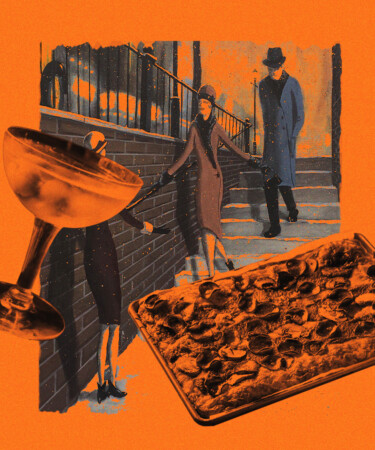Of the many styles of pizza served in the United States, the large, hand-tossed thin crust of New York-style pizza and the gooey, bulky pies of Chicago’s signature deep-dish are historically the most iconic. But following a major uptick in pizzerias specializing in crunchy-crusted squares, Detroit-style pizza is finally having its moment in the national spotlight. The Michigan-born style’s ascent is even more impressive given its small start in what was once a Prohibition-era bar.
Despite hundreds of Detroit-style pizza restaurants all over the U.S. today, nearly every one points to Buddy’s Rendezvous Pizzeria on Detroit’s East Side as the creator of the style. But before its pies premiered in 1946, Buddy’s unofficially opened its doors as a “blind pig,” a low-end illegal bar that served alcohol while it was outlawed. Following the repeal of the 18th Amendment, Buddy’s acquired a legal liquor license and expanded its operation to be a full-fledged bar in 1936. Just 10 years later, the bar was transformed into a family restaurant and started serving the now iconic pizza style.
Detroit-style pizza’s square (don’t call it rectangular) shape came about thanks to the traditional metal trays the pies are baked in. These trays are actually linked to the city’s long history as a hub for the automotive industry. When pizza was baked at Buddy’s, co-owners Gus Guerra and his uncle-in-law used a type of tray that had only been used to hold small nuts, bolts, and other parts in the city’s automobile factories. The pans, which were oiled and preheated before the pizza was baked, proved to be the perfect medium for yielding crispy, yet still fluffy, dough. The technique is now widely used across the U.S.
Further differentiating Detroit-style pizza from its contemporaries is how its toppings are layered. Whereas most pizzas are dressed with sauce and cheese before other additions are sprinkled on, the Detroit-style turns that on its head, layering on pepperoni and other extras first, then Wisconsin brick cheese, and finally a heaping red sauce on top. It’s this last step that’s earned the pie the nickname “Detroit red-top.” And while many Detroit-style pizza purveyors can agree that Buddy’s was the first to do it this way, it’s not entirely clear why they did. Some versions of the story suggest that Guerra’s Sicilian-born grandmother taught him how to make her home-style pizza, while other accounts argue that it was actually Connie Piccinato, a longtime employee, who taught Guerra the recipe.
No matter who actually came up with the original version, there’s no denying its popularity among Detroit locals. Since its founding, Buddy’s has expanded to include over 15 establishments across Michigan. The rest of the nation is finally following suit, and we have an old speakeasy, the auto industry, and some rebellious topping practices to thank.
*Image retrieved from Brent Hofacker via stock.adobe.com
